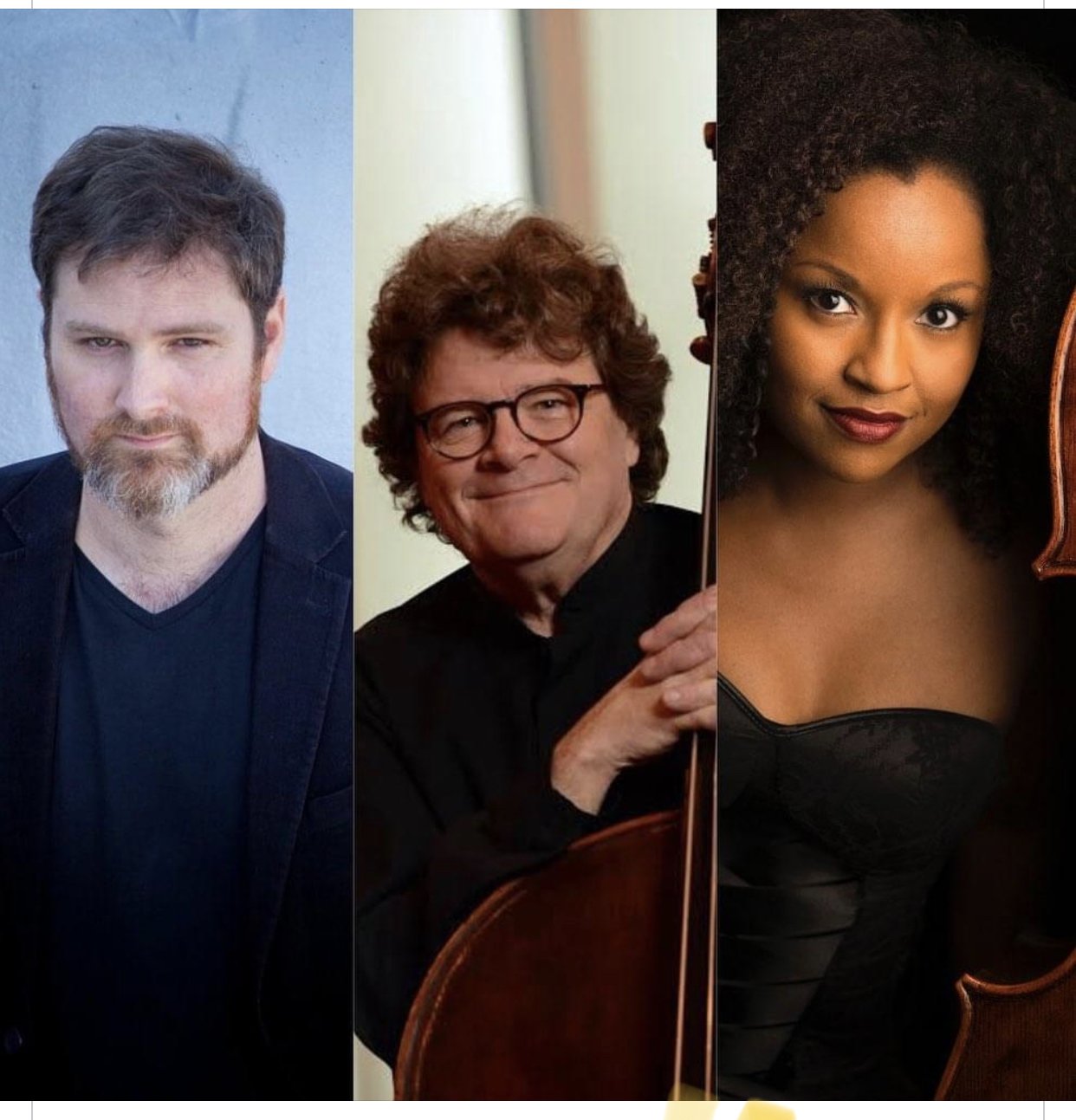
UPCOMING EVENTS

Carnegie Weill Hall Recital
As a laureate of Concert Artist International Competition winner, Seulki Susie Yoo will join the winners’ recital at Carnegie Weill Hall on May 31, 2024. Please join us!

Paul Dukas's Jewish Identity
Hosted by The Jewish Studies and Music Study Group of the American Musicological Society, Seulki Susie Yoo will present Paul Dukas’s French-Jewish identity manifested in his piano repertoire.
Link to join: https://harvard.zoom.us/meeting/register/tJMqcuutrjkvE9bYi17RfpfwmVyd7DA-m0G3
Chopin Complete Etude Recital
Hosted by Unitarian Universalist Fellowship of Centre County, I will be performing Chopin complete etude recital on April 6. Stay tuned!

2024 Penn State Bass Day
During the 2024 Penn State Bass Day, Dominik Wagner, Mikyung Sung and I will be performing several exciting and beautiful music.
https://sites.psu.edu/bass/?fbclid=IwAR1A6A9imaafkGGn6Ioo1C4oslaz-8oeaoV0Etbx5U-JKwOksKSlIf6Wanw

The Rhapsody Series: Flute Music by Jewish Composers
The Penn State School of Music Presents: The Rhapsody Series A curated recital series of hour-long concerts presented without intermission. Free and open to the public.
On Flute Music by Jewish Composers, join professor Naomi Seidman for a recital of music from Jewish composers across the diaspora. Music selections include compositions by Aaron Copland, Shulamit Ran, Lex Van Delden, and Rosy Wertheim. She will be joined by violinist Trevor Thompson, violist John Roxburgh, soprano Jennifer Trost, cellist Jon Dexter, and pianist Seulki Yoo.
2024 African American Music Festival
Please join us for the 2024 African American Music Festival on 2/9 at 7:30 pm! Broadway artists Allyson Kaye Daniel, Gilbert Bailey II and I will be performing some fun music!!
2024 Double Reeds Day
Please join us for 2024 Double Reeds Day at Penn State Recital Hall!
We will be playing a lot of beautiful music:
Robert Planel: Andante et Scherzo (1931) pour hautbois, basson et piano
Claude Debussy - 5 Pieces for Oboe and Piano
Amanda Harberg' Prayer for Flute and Piano

Collaborative Recital with Eli Glick
Eli and I will perform various arias from Don Giovanni, Le nozzle di Figaro, Aida, and others.

Collaborative Recital with Michael Fisher
Violinist Michael Fisher and I will perform various Romantic pieces with a theme of “Love.”
Don’t miss Franck Violin Sonata, Kreisler, Manuel de Falla, and Amy Beach (and more)!
The location is at Trachte Music Center, Williamsport, PA.

2023 PMTA Annual Conference
Paul Dukas’s Rameau Variations
This 50 minutes of lecture-recital of Paul Dukas’s Rameau Variations explores the composition’s theoretical, musicological, and sociological aspects along with the recital.

Bass Day: Collaborative Recital with Joel Quarrington)
A legendary double bassist in our time, Joel Quarrington will visit State College, PA. We will perform Silvestrov, Korngold, Schumann, and Bach!
SMT (Rocky Mountain Chapter) Annual Conference, 2023
I will be presenting '“Revisiting the Tonality of Dukas's Rameau Variations: A Metamorphosis of Chromatic to Diatonic Pitches” at Society for Music Theory -Rocky Mountain Chapter- Annual Conference at Utah State University, Logan, UT. Below is an abstract of my study.
Piano repertoires from the Fin-de-siècle era, including those of Paul Dukas, are increasing analytical interest. In particular, Dukas's Variation, Interlude, et Finale sur un Thème de Rameau is recognized as an embodiment of the French spirit, garnering praise for being “genuinely French” and demonstrating “French lucid principles of balance and logic.”
The proposed research expands on this analytical approach by implementing a broader perspective focused on the motivic, harmonic, and structural interrelationship. Background graphs provide coherence lacking in the previous microscopic approach due to the untraditional harmonic idiom, dense polyphonic texture, and extreme chromaticism.
Specifically, this analysis involves reexamining local chromatic pitches as tonally functioning tones at the global level, which are functionally similar to traditional voice-leading practice. This includes metamorphosis of nonresolving nonharmonic to diatonic tones, chromatic passing tones to predominant substitution, and nonfunctioning harmonic progression to goal-directed continuation. Additionally, this study emphasizes how intervallic relationships anticipate higher structural levels of tonal foreshadowing in later variations.
Consequently, the Rameau Variations become more distinguished from atonally designed music, highlighting the tonal foundation that institutes Dukas’s harmonic language and solidifying their place as an important and unique contribution to the musical canon, which is a testament to his genius.
CMS (College Music Society) 44th Northeast Conference
Date: March 12, 2023
Location: Southern Connecticut State University, New Haven, CT, USA
Context:
Lecture Recital on Variations, Interlude, et Finale sur un Thème de Rameau, followed by my lecture of “A Musico-Sociological Study of Paul Dukas's French-Jewish Identity Manifested in "Variations, Interlude, et Finale Sur un Thème de Rameau.”

CMS (College Music Society) South Central Conference
Date: March 9th, 2023
Location: Angelo State University, San Angelo, TX, USA
Context:
Lecture Recital on Variations, Interlude, et Finale sur un Thème de Rameau, followed by my lecture of “A Musico-Sociological Study of Paul Dukas's French-Jewish Identity Manifested in "Variations, Interlude, et Finale Sur un Thème de Rameau.”

CMS (College Music Society) Northwest Conference
Date: March 4-5, 2023
Location: Wichita State University, Kansas, USA
Context:
Lecture Recital on Variations, Interlude, et Finale sur un Thème de Rameau, followed by my lecture of “A Musico-Sociological Study of Paul Dukas's French-Jewish Identity Manifested in "Variations, Interlude, et Finale Sur un Thème de Rameau.”



DMA Final Recital
Seulki Susie Yoo DMA Final recital:
Program:
Program notes
Piano Sonata in E flat minor (1901)
Paul Dukas
Paul Dukas’s pianism is among the finest representations of the French fin-de-siècle style despite his small portfolio of piano writing. Dukas’s Piano Sonata (1901) is the most complex, serious, and monumental piece in French keyboard history. This sonata was dedicated to Saint-Saëns and was premiered by Edouard Risler, a celebrated pianist of the era. In 1928, the critic Irving Schwerké published his analysis of the sonata in The Musical Quarterly: “mutual formal perfection and mobility of thought…By the vastness of its proportions, the quality of its writing, the power of its developments, and by its luminous lyricism, the Sonata in E flat minor is unrivaled by any other composition of this type”
Indeed, the synthetic aesthetic that Dukas pursues in the sonata appears in form and structure, colorful harmony use, and refined compositional techniques. The sonata-allegro form of the first movement is representative of French Romanticism, manifesting a virtuosic texture with liberal use of accidentals. The Beethovenian second movement is a free-variation in heavenlike mood. The vigorous, perpetual rhythmic first part of the third movement is sharply contrasted with the following strict fugue. The last movement is symphonic in scale; after the improvisational Très Lent, the ambitious first theme contrasts with the grandeur, majestic Lisztian second theme in moods.
Le Tombeau De Paul Dukas- Neuf pièces inédites composées pour piano, à la mémoire de Paul Dukas (1936)
After Paul Dukas died in 1935, Henry Prunières asked a group of Dukas’s pupils and colleagues for short memorial works to publish in La Revue musicale. Le Tombeau de Paul Dukas was published in 1936 including nine miniature pieces.
Schmitt uses the consistent ostinato bell motif ‘A (la)’ to remember Dukas the same way Dukas commemorates Debussy in his La Plainte, au loin, du Faune…
Falla’s French Impressionism language in Pour le Tombeau is expressed by the consecutive octaves in a large range, borrowing the similar technique in La Cathedrale Engloutie.
Pierne and Ropartz both use Dukas theme “B (P)- A (A)- G (U)- E (L) -D (D)-G (U)-D (K)-A (A) -E (S) to unfold the music. While Pierne explicitly develops the Dukas subject in rigorous contrapuntal texture in Prélude, Ropartz’s A la Mémoire has a more introspective quality. After the chordal Grave, the nostalgistic melody begins, then the abrupt E minor chord implies Dukas’s death.
Rodrigo’s Hommage à Paul Dukas is the most sorrowful and melancholic piece among this set. The semitone ostinato provides a contemplative atmosphere, and the following lamenting, cantabile theme delivers Rodrigo’s deep sadness for Dukas’s absence.
Kreins’ expressivity in Pièce á la Mémoire de Paul Dukas is represented in fin-de-siècle style; the juxtaposition of accumulated chords, and mixture of major and minor deliver his heavy emotions. The restless eighth notes throughout the piece almost sound like soft prayer.
Messiaen commemorates Dukas as a majestic and dignified colleague using his hallmark of the permutation technique with the style of symphonic in Pièce pour le Tombeau de Paul Dukas.
Aubin’s Le Sommeil d’Iskender has subtitle ‘...Il sentit l’ombre l’entourer Paul Dukas, “La Péri.” The descending chromatic Chanté from La Peri is juxtaposed with the slow promenading quarter notes. The music reaches the grandiose climax then recalls the La Peri motif at the ending.
Barraine’s Hommage à Paul Dukas is rather light-toned. The vanishing ending is as if she envisions Dukas’s ascent to heaven.
-Seulki Yoo

PMTA Conference/Lecture Recital
Program: Stephen Heller 25 Melodious Studies, Op. 45
Location: Lycoming College
Stephen Heller’s 25 Melodious Studies, Op. 45 represents lyrical and poetic etude style combined with a character piece genre. My presentation will reveal both the technical and musical value of this masterpiece which would be an excellent fit for the intermediate level of students. The contents incorporate Heller's distinctive view on the etude genre that enhances a student's musical imagination, and the following content will include choosing finger numbers and editions to discuss the technical aspect.

